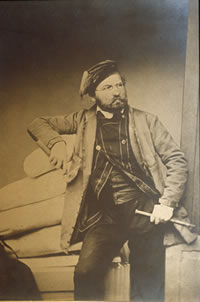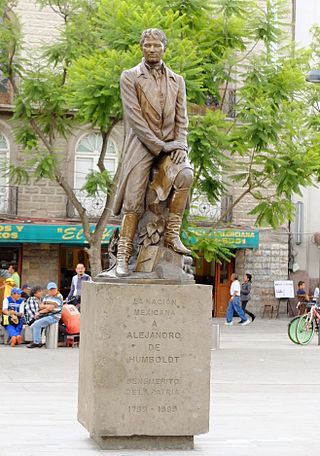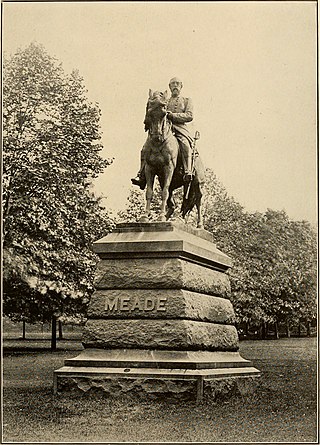
The Centennial International Exhibition, officially the International Exhibition of Arts, Manufactures, and Products of the Soil and Mine, was held in Philadelphia, Pennsylvania, from May 10 to November 10, 1876. It was the first official world's fair to be held in the United States and coincided with the centennial anniversary of the Declaration of Independence's adoption in Philadelphia on July 4, 1776.

Fairmount Park is the largest municipal park in Philadelphia and the historic name for a group of parks located throughout the city. Fairmount Park consists of two park sections named East Park and West Park, divided by the Schuylkill River, with the two sections together totalling 2,052 acres (830 ha). Management of Fairmount Park and the entire citywide park system is overseen by Philadelphia Parks & Recreation, a city department created in 2010 from the merger of the Fairmount Park Commission and the Department of Recreation.

Memorial Hall is a Beaux-Arts style building in the Centennial District of West Fairmount Park, Philadelphia, Pennsylvania. Built as the art gallery for the 1876 Centennial Exposition, it is the only major structure from that exhibition to survive. It subsequently housed the Pennsylvania Museum of Industrial Art.

Ferdinand von Miller was a German artisan who is noted for his furtherance of bronze founding.

Carl Johann Steinhäuser was a noted German sculptor in the classical style.

Crescent Boat Club is an American amateur rowing club located at #5 Boathouse Row in the historic Boathouse Row of Philadelphia, Pennsylvania. It was founded in 1867 when Pickwick Barge Club and Iona Barge Club merged. Crescent Boat Club joined the Schuylkill Navy in 1868. In 1871, Crescent competed in and won the doubles event in the first regatta of the National Association of Amateur Oarsmen, an event "which undoubtedly helped the sport greatly."

The Girard Avenue Bridge is an automobile and trolley bridge in Philadelphia, Pennsylvania, that carries Girard Avenue over the Schuylkill River. It connects the east and west sections of Fairmount Park, and the Brewerytown neighborhood with the Philadelphia Zoo. The current bridge is the third built on the site.

The original Goethe–Schiller Monument is in Weimar, Germany. It incorporates Ernst Rietschel's 1857 bronze double statue of Johann Wolfgang Goethe (1749–1832) and Friedrich Schiller (1759–1805), who are probably the two most revered figures in German literature. The monument has been described "as one of the most famous and most beloved monuments in all of Germany" and as the beginning of a "cult of the monument". Dozens of monuments to Goethe and to Schiller were built subsequently in Europe and the United States.

Lincoln Monument (Philadelphia) is a monument honoring Abraham Lincoln in Fairmount Park, Philadelphia, Pennsylvania, United States. One of the first initiated in memory of the assassinated president, the monument was designed by neoclassical sculptor Randolph Rogers and completed in 1871. It is now located northeast of the intersection of Kelly Drive and Sedgley Drive, opposite Boathouse Row.

Ferdinand Miller, from 1875 von Miller and from 1912 Freiherr von Miller was an ore caster, sculptor and director of the Academy of Fine Arts, Munich. He also held a seat in the Royal Bavarian House of Lords, the Reichsrat.
The New England Granite Works was a firm incorporated in Hartford, Connecticut on June 16, 1871 by James G. Batterson. It was notable for creating a large number of works in the New England area until it was dissolved on June 26, 1926.
This is a history and list of drinking fountains in the United States. A drinking fountain, also called a water fountain or bubbler, is a fountain designed to provide drinking water. It consists of a basin with either continuously running water or a tap. The drinker bends down to the stream of water and swallows water directly from the stream. Drinking water fountains are most commonly found in heavy usage areas like public amenities, schools, airports, and museums.

The Catholic Total Abstinence Union Fountain (1874–1877) – also known as The Catholic Total Abstinence Centennial Fountain or The Centennial Fountain – is a now-defunct ornamental fountain and drinking fountain located in West Fairmount Park, Philadelphia, Pennsylvania. Created as an attraction for the 1876 Centennial Exposition, it was commissioned by the Catholic Total Abstinence Union of America, a religious organization that advocated for total abstinence from alcohol.
Nathaniel Borradaile Browne (1819-1875) was an American lawyer, financier, and government official in Philadelphia, Pennsylvania.

The statue of Alexander von Humboldt is installed in Mexico City's Alameda Central, in Mexico. The base has the inscription, "La Nación Mexicana a Alejandro de Humboldt – Benemerito de la Patria 1799–1999". The statue was built after Humboldt visited Mexico.

An 1876 statue of Christopher Columbus by Emanuele Caroni is installed in Marconi Plaza, 2848 South Broad Street, Philadelphia, Pennsylvania, inside a railing that bears wire art of Columbus's three ships, the Niña, Pinta, and Santa Maria.

The Alexander von Humboldt statue is a monumental statue in Chicago, Illinois, United States. Located in Humboldt Park, a major urban park in the Humboldt Park neighborhood, the statue depicts Alexander von Humboldt, a Prussian polymath and the park's namesake. The statue was dedicated in 1892.

Public drinking fountains in Philadelphia, Pennsylvania, United States, have been built and used since the 19th century. Various reform-minded organizations in the city supported public drinking fountains as street furniture for different but overlapping reasons. One was the general promotion of public health, in an era of poor water and typhoid fever. Leaders of the temperance movement such as the Woman's Christian Temperance Union saw free, clean water as a crucial alternative to beer. Emerging animal welfare organizations, notably the Society for the Prevention of Cruelty to Animals, wanted to provide water to the dogs and working horses of the city on humanitarian grounds, which is why Philadelphia's drinking fountains of the era often include curb-level troughs that animals could reach.

The equestrian statue of Ulysses S. Grant is a public monument in Philadelphia, Pennsylvania, United States. Located in Fairmount Park, the monument honors Ulysses S. Grant, who served as a general in the Union Army during the American Civil War and later as President of the United States. The monument was designed by Daniel Chester French and Edward Clark Potter and consists of an equestrian statue atop a pedestal. The statue was dedicated in 1899.

Major General George Gordon Meade is an equestrian statue that stands in Philadelphia's Fairmount Park. The statue, which was unveiled in 1887, was designed by sculptor Alexander Milne Calder and honors George Meade, who had served as an officer in the Union Army during the American Civil War and was later a commissioner for the park. The statue is one of two statues of Meade at Fairmount, with the other one being a part of the Smith Memorial Arch.


















